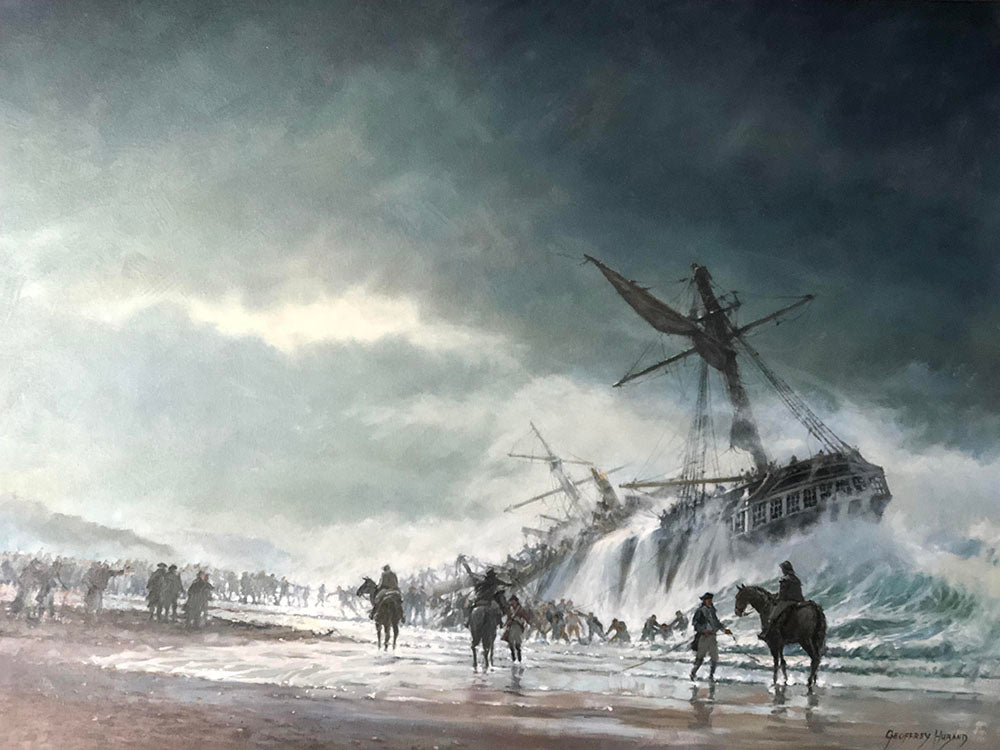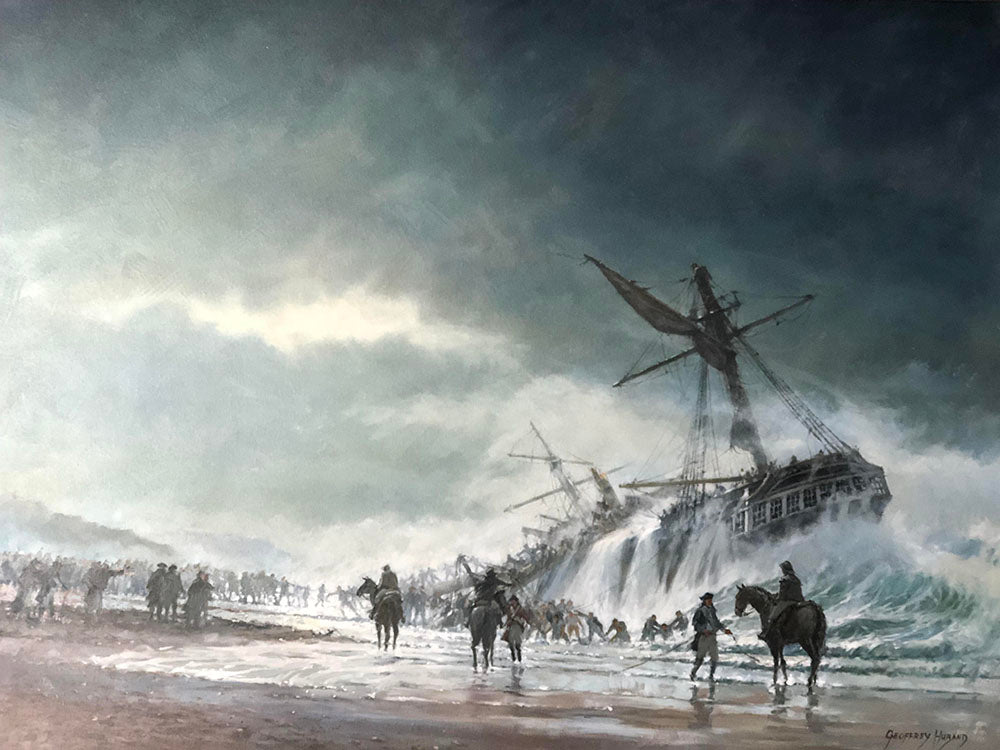1
/
of
1
Art Marine
The Loss of the Anson - Geoffrey Huband
The Loss of the Anson - Geoffrey Huband
Regular price
£8,000.00 GBP
Regular price
Sale price
£8,000.00 GBP
Unit price
/
per
Shipping calculated at checkout.
Couldn't load pickup availability
1807 was a disastrous year for the Royal Navy during which by misadventure. 29 ships and most of their crews were lost. The year concluded with the loss of HMS Anson, a calamitous event that surpassed the year’s previous disasters.
HMS Anson was a 44-gun frigate cut down from a 64 gun ship of the line and re-commissioned as a powerful frigate, which in this form distinguished herself well. She had been under the command of Captain Charles Lydiard for 2 years when on the 24th of December 1807 she sailed from Falmouth to resume her station off Brest. Deteriorating adverse weather conditions, West South Westerly severe gales, convinced Captain Lydiard that he should put about and return to port. Due to the severity of the weather and poor visibility HMS Anson became embayed in Mount’s Bay, the winds having reached hurricane force. The ship was now in a perilous position and despite her crew’s best efforts her last anchor parted at 7 o’clock in the morning of the 29th of December. The decision was made, for the preservation of lives, to run the ship ashore on Loe Bar East of Port Levan.
HMS Anson struck the Bar at about 8 o’clock, the beach at Loe Bar being steeply shelving meant that having broached broadside to the sea, she was by the sheer force of the waves driven very close to the shore lying on her port side. During this violent occurrence, the mast collapsed, providentially forming a life saving bridge between the vessel and the shore, by this means many of her crew ran the gauntlet of the waves and were pulled from the surf by those gathered on shore.
In spite of these courageous efforts more than 100 individuals including Captain Lydiard were lost, he was last seen alive attempting to rescue one of the ship’s boys before both were swept away by a huge wave. The positive consequences of this disaster were twofold. Amongst the gathered crowd of rescuers was a man called Henry Trengrouse who on seeing the difficulty experienced getting a rescue line aboard a vessel so close to shore, resolved to develop a means of doing so. He is attributed with being instrumental in the invention of the “Rocket Line” which eventually became a standard item of rescue equipment worldwide.
The second consequence was a passing of an Act of Parliament in July 1808 making proper provision for the Christian burial of those who lost their lives at sea.
Original oil on canvas signed lower right, framed.
Canvas size 30 x 40 inches (76cm x 101.5cm)
Share


